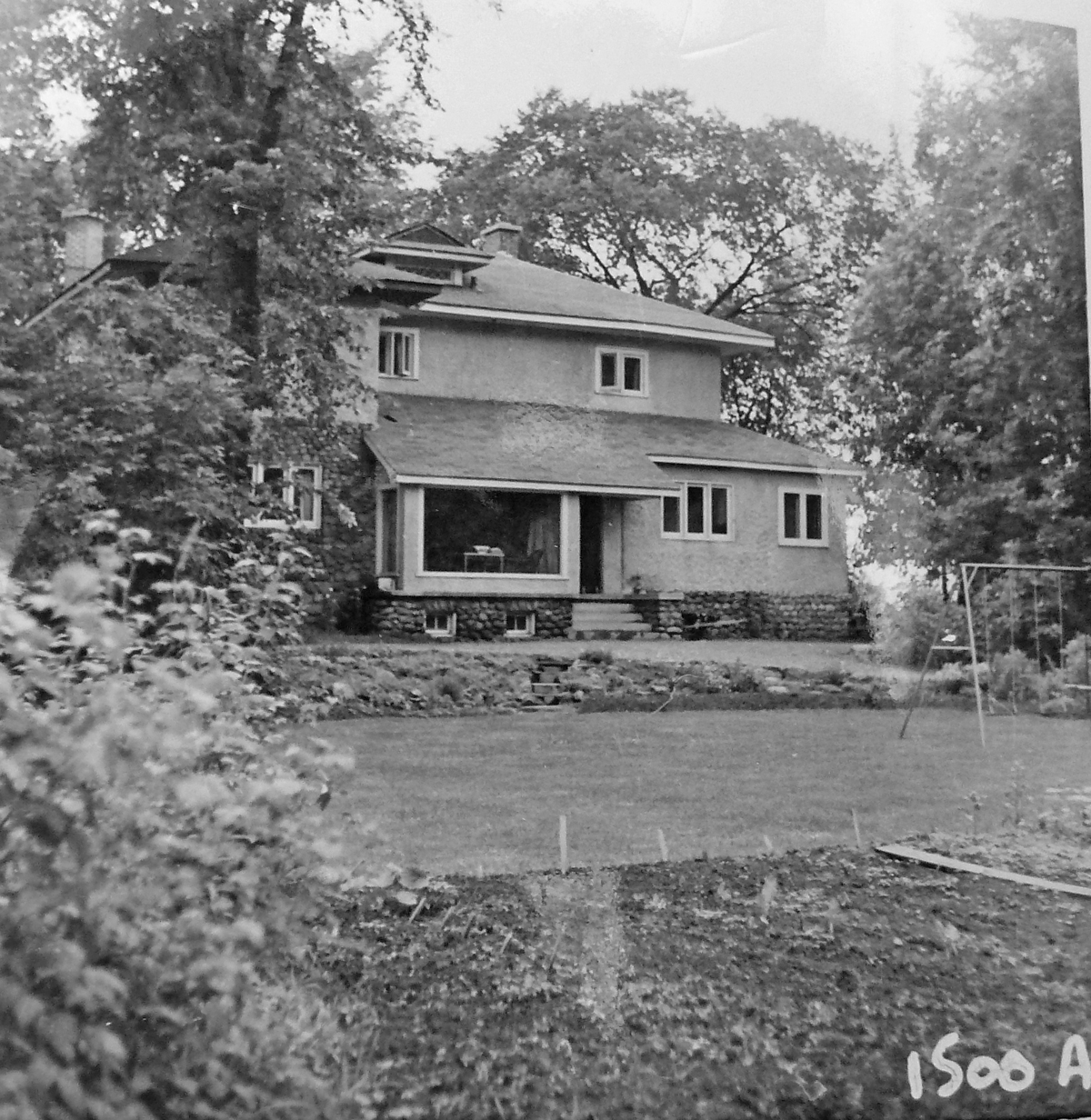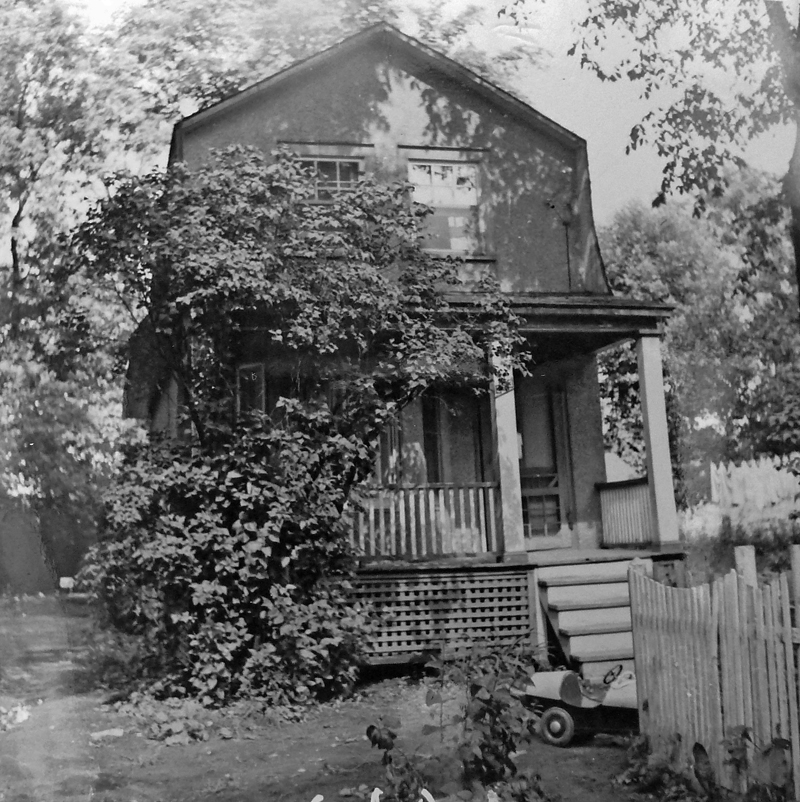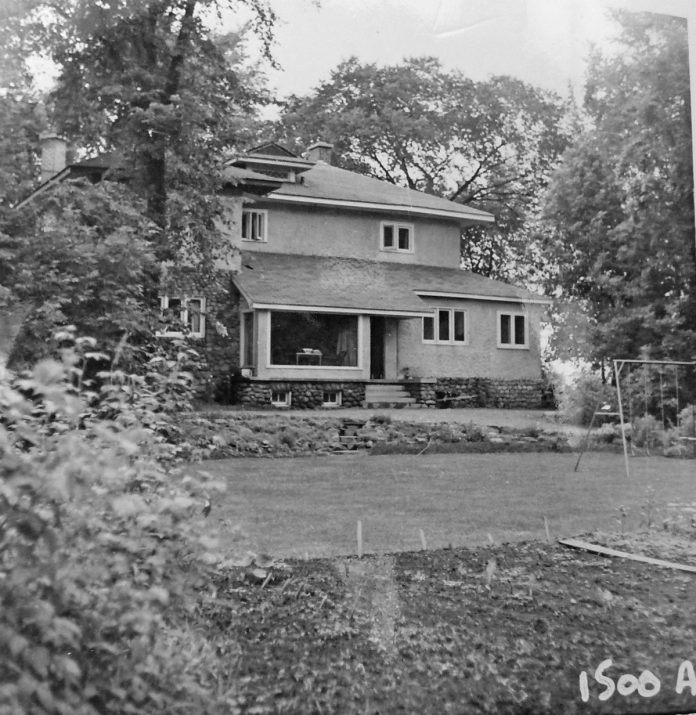
Last month, in Part I of this examination of the disappearance of Banting Avenue, the focus was on the location of this neighbourhood at the north end of Mansfield Avenue and along the river.
The Banting Avenue neighbourhood was not large or heavily populated, but it was a very special corner of the city. The first houses were built in the first decade of the 20th century, when the Britannia Line of the Ottawa Electric Railway (OER), running along what is now Byron Avenue, made it possible for people to commute downtown from houses in the western suburbs. The homes of Banting Avenue were quite isolated, with no street connection east or west along the shore of the Ottawa River, and connected to the city by only Mansfield Avenue. The neighbourhood was practically invisible from Richmond Road, hidden by the raised embankment of the CPR railway.
In the later 1940s, the Federal District Commission (FDC), (a forerunner of the NCC), sent out letters to the owners of the properties, indicating that the ownership of their properties had been transferred to the FDC and that agents from the FDC would be contacting them to negotiate a selling price. At the time of these notices of expropriation, there were about 24 homes in the Banting Avenue neighbourhood and in the adjoining beach area behind the Rochester farm. The 24 properties of the Banting Avenue neighbourhood made up about six per cent of the properties which were expropriated for the Ottawa River Parkway – and the Ottawa River Parkway was a small part of the Parkway development activities of the Gréber Commission.
What did Banting Avenue look like in the early 1940s? Fortunately, some photographs have survived – some from the residents, and others from the real estate agents who did the appraisal of the properties as part of the expropriation process. The photos show an interesting, heterogeneous neighbourhood, comprised of small, one-storey cottages which were converted to year-round occupancy, a scattering of two-storey hip-roof residences of a style common in the early years of the 20th century, and then a number of large and well-constructed houses occupied by medical professionals, business owners and diplomatic personnel.
Perhaps the best-remembered house in the neighbourhood was the Jones house, located on the east side of Banting Avenue, at the river’s edge. This property was rented to the First Secretary to the High Commissioner of New Zealand, and was the site of many summer garden parties. The lawn stretched right down to the river. A live band would play, and couples in formal wear danced on the verandah. This house was more than 40 years old when it was expropriated in the mid-1940s. A rock wall was constructed along the river’s edge to protect this property. This wall is still visible.

Further south, (away from the river) along Banting Avenue, just as the street turned to the west to parallel the CPR tracks, was the Waterman house. The Waterman house was built in about 1910, and like the others in the neighbourhood, was connected to city water and sewer in the early 1950s. There were similar houses on either side of the Watermans. On the north side, there was the Edney house – complete with a lovingly tended lawn bowling green – and on the south side, the Hobbs house, with a tennis court in between the two.
The Wilson residence was one of the most modern houses in the neighbourhood. It was less than 10 years old and had some very modern features for its time, including a recreation room, a cistern for soft-water collection, and a garage built under the house. The Wilson house was rented by the First Secretary to the High Commissioner of Australia.

The Banting Avenue neighbourhood was a hotbed of opposition to the actions of the Federal District Commission to expropriate properties. A group of six property owners wrote a letter, which was published in both the Ottawa Citizen and the Ottawa Journal in November 1954. The letter criticized the actions of the Federal District Commission and their efforts to take possession of property for the Ottawa River Parkway. Four of the six people who signed the letter resided in the Banting Avenue area. This letter did not change the end result, but it brought public attention to the issue and in all probability caused the FDC to modify its procedures.
Today, there is almost no trace of the 24 properties that made up Banting Avenue. The smaller and better-built structures were moved, and the larger and older houses were demolished on site. Some of the residents moved across Richmond Road and into the McKellar Park subdivision that was being developed on the site of the McKellar Park Golf Course – but many people lost the sense of social cohesion which was a part of their former neighbourhood.
Bob Grainger is a retired federal public servant with an avid interest in local history. KT readers may already know him through his book, Early days in Westboro Beach – Images and Reflections. He’s also part of the Woodroffe North history project and is currently working on the history of Champlain Park and Ottawa West. Do you have any memories to share about Banting Avenue? If so we’d love to hear them!
